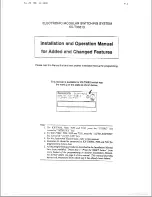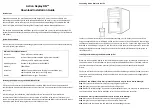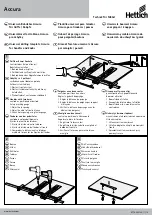
Main Diagram
LITHIONICS BATTERY, CLEARWATER, FL 33765 USA | PH: 727.726.4204 | FAX: 727.797.8046 | WEB: LITHIONICSBATTERY.com
4
The main diagram depicts the general layout of the system. The 4/0 positive cables are connected to the main positive
distribution buss via a 400A class T fuse and an isolation switch. The inverter is connected to the positive distribution buss
via a Class T 350A amp fuse and an isolation switch. The Class T fuse block and isolation switch should be mounted as close
as possible to the positive distribution buss. The isolation switch allows you to isolate the inverter in case of a malfunction as
well as disabling the inverter if you need to work on the AC system. The chassis DC grounding conductor (green) should be
sized not less than one size smaller than the DC positive conductor and have a capacity such that the DC positive fuse has an
amperage rating not greater than 135% of the current rating of this ground wire. If the positive cable supplying the inverter
shorts to ground internally, then the chassis ground cable needs to be able to carry enough current to blow the fuse without
melting and possibly causing a fire.
The inverter is controlled by the Multi-Function Display. The display is used to provide information about the inverters
status and can be used to customize its features.
The Lithionics IonGage monitors battery voltage, current, power, amp-hours consumed and state of charge.
The DMT-1250 charger is connected to the positive distribution buss via a 60A circuit breaker (Ch-1). The PV solar array is
connected to the MPPT charger input (Ch-2) via a circuit breaker. Please note that the maximum PV solar array voltage is
45VDC. The alternator / start battery input (Ch-3) is connected to the start battery via a 70A circuit breaker, this circuit
breaker must be installed as close to the battery as possible.






































